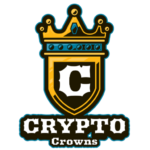
The New Age of Self-Learning Systems
The cryptocurrency industry has always been a breeding ground for innovation. From blockchain’s transparent ledgers to smart contracts that execute themselves, decentralization has redefined how trust and value interact online. But beyond algorithms and ledgers, a new wave of intelligence is rising—systems that don’t just follow instructions but interpret, decide, and act independently. These are not merely tools; they are autonomous partners capable of managing complex, high-velocity crypto environments.
Intelligent automation is now closing the gap between human reasoning and machine precision. Where traders once spent sleepless nights monitoring charts, intelligent systems now process terabytes of real-time data, evaluate thousands of trading pairs, and respond in milliseconds to subtle market shifts. What was once reactive is becoming predictive, and what was once manual is now self-correcting.
Automation Beyond Code
The idea of logic meeting liquidity rests on how these digital systems process information. Unlike traditional bots that execute preset triggers, new frameworks apply layered reasoning, similar to human thought processes. They understand intent, interpret trends, and evaluate outcomes under shifting conditions. The integration of natural language processing, advanced analytics, and machine learning creates an operational fabric that is flexible yet controlled—capable of learning from every market cycle it experiences.
Within decentralized finance (DeFi), these intelligent systems act as the invisible backbone of protocols. They assess loan risks, rebalance liquidity pools, and even predict impermanent loss before it occurs. Such advancements redefine what risk management means in an open financial ecosystem. This is where the role of an ai agent becomes critical—bridging raw data with strategic execution to produce consistent, adaptive performance.
Where Human Insight Meets Machine Precision
Despite the autonomy of modern systems, the human element remains essential. Developers, analysts, and investors set the philosophical boundaries of these digital intelligences. The best outcomes occur when machine learning amplifies human intuition rather than replaces it. For instance, a crypto hedge fund might use automation to identify potential arbitrage windows, but the final decision still requires human judgment, regulatory awareness, and strategic timing.
The partnership between human intent and automated action forms the future’s financial symphony. Each side compensates for the other’s weaknesses—machines counter human error and fatigue, while humans guide context and purpose. This synergy transforms the crypto market from chaotic speculation into structured, intelligent movement.
Shaping the Decentralized Workforce
As decentralized autonomous organizations (DAOs) evolve, they increasingly rely on autonomous digital entities to manage workflows. These entities can process proposals, allocate funds, or audit transactions without human intermediaries. In effect, they form a decentralized workforce capable of carrying out operational tasks while adhering to the DAO’s encoded rules.
This model democratizes efficiency. Smaller projects can compete with larger ones by using intelligent automation to execute strategies at scale, lowering costs and reducing dependency on centralized teams. It also paves the way for entirely self-governing economic ecosystems—communities that operate through shared protocols, monitored by self-updating algorithms.
From Trade Execution to Market Forecasting
Automation in crypto isn’t limited to executing trades. Its influence extends into behavioral prediction and strategic adaptation. Using pattern recognition and deep learning, intelligent systems can detect subtle correlations between social media sentiment, blockchain activity, and macroeconomic indicators. For example, a model could analyze how Bitcoin wallet movements correlate with Twitter discussions to predict market direction hours before volatility appears on traditional charts.
These systems also enhance transparency. Instead of hidden black-box operations, new frameworks allow auditability of every decision path. Each automated trade, liquidity shift, or compliance verification leaves a traceable record—bringing accountability to automation, an essential quality in decentralized markets where anonymity often reigns.
Ethics and Accountability in Automation
Autonomous systems introduce new ethical questions. If an intelligent trading framework makes a loss, who is responsible—the programmer, the user, or the algorithm itself? Governance must evolve alongside technology. Developers are now embedding ethical layers into their models: transparency checkpoints, bias detection modules, and human override functions. These ensure that automation does not outpace control.
Governments and exchanges are also beginning to draft frameworks for machine-driven transactions. As regulatory clarity grows, intelligent automation may transition from an experimental niche to a standardized component of digital finance infrastructure. Balancing speed and responsibility will define the next decade of crypto innovation.
Integration Across the Value Chain
In exchanges, intelligent automation manages more than orders—it supervises infrastructure. From cybersecurity monitoring to energy optimization in mining operations, it functions as a silent manager. By analyzing heat maps, network latency, and throughput, systems can predict hardware failures before they happen. Smart contracts then trigger maintenance or redistribution of workloads autonomously, preventing costly downtime.
Within token ecosystems, automated intelligence enhances liquidity management. It constantly rebalances pools, reduces slippage, and secures arbitrage opportunities. For staking mechanisms, automation ensures timely rewards and penalty enforcement without requiring human validators to stay constantly online. The convergence of blockchain and automation thus creates not just smart contracts, but self-healing economies.
Autonomy in Compliance and Risk
Beyond trading, compliance remains one of the most time-consuming aspects of digital finance. Intelligent automation can scan transaction histories across multiple chains, flag anomalies, and cross-reference addresses with sanction lists in seconds. This level of precision reduces human error while improving transparency. It also allows exchanges to meet global standards without expanding compliance teams exponentially.
Before the next regulatory wave reshapes the crypto landscape, early adopters of automation will already have adaptable systems in place. An ai agent embedded within these infrastructures doesn’t just automate—it interprets evolving laws, adjusts workflows, and continuously retrains itself to meet compliance expectations. The result is a crypto ecosystem that is both agile and accountable.
A New Kind of Market Mind
Intelligent automation will not replace the spirit of innovation driving crypto; it will amplify it. As systems gain cognitive depth, they become collaborators rather than executors. The boundary between software and strategy fades, creating a fluid environment where algorithms evolve with markets in real time. Traders, developers, and communities no longer work around technology—they work with it.
The crypto economy’s future lies in this harmony: logic guiding liquidity, and automation serving imagination. What began as a decentralized dream is transforming into an intelligent, self-regulating network—one where human creativity and machine precision meet to shape the next chapter of financial evolution.


